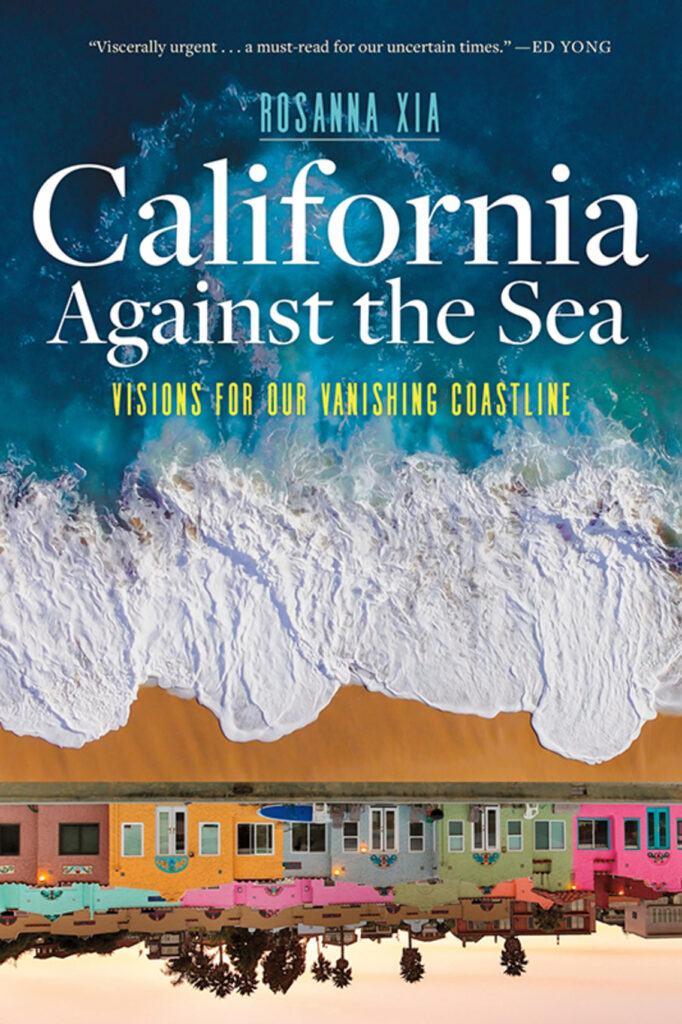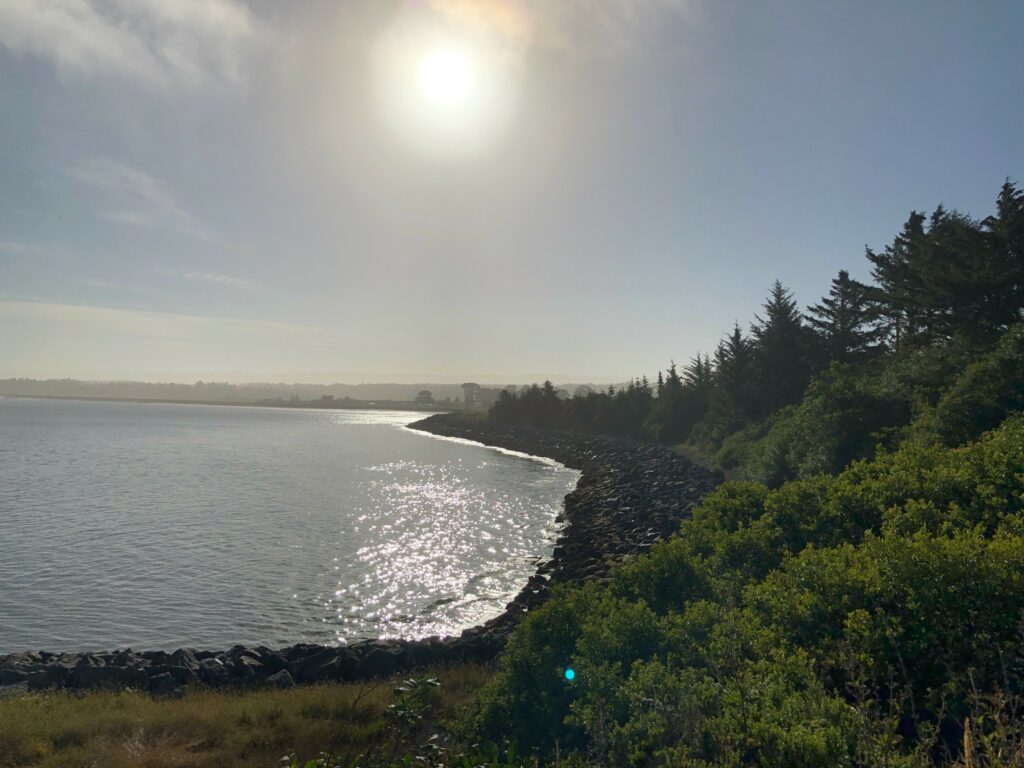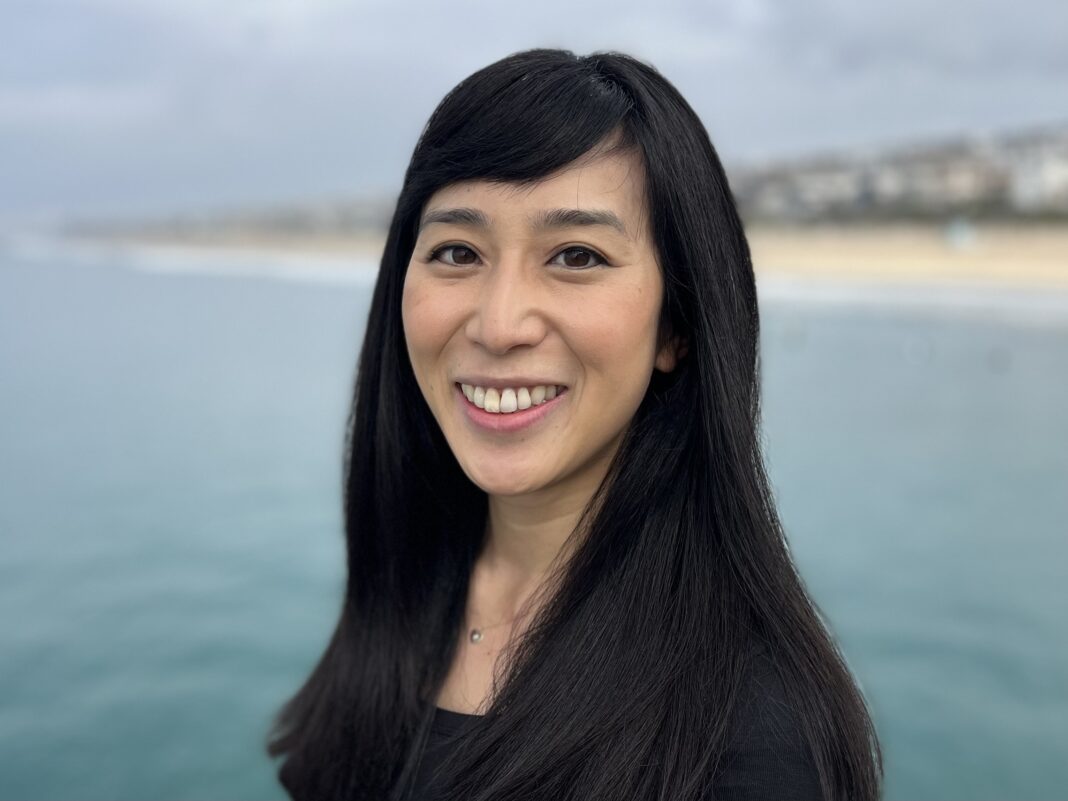The Pulitzer Prize finalist, who covers the California coast, recently published a book about how sea-level rise has changed the way we live.
When Rosanna Xia moved from Massachusetts to California 13 years ago to take a job with the Los Angeles Times, some of the first stories she covered were about natural disasters. She developed an interest in climate reporting, writing about the California drought and eventually moving into the job she has today: covering the California coast as a beat. In 2020, she was honored as a Pulitzer Prize finalist in explanatory reporting.
This September, Xia released her first book, California Against the Sea: Visions for Our Vanishing Coastline (Heyday), a deep dive into how communities along the coast are grappling with sea-level rise and other challenges the ocean will pose as the climate continues to change.
Bluedot Living L.A. editor Robin Jones spoke with Xia about what she learned while researching the book, what she thinks all Californians should know about the ocean, and how the state can forge a path forward.
Robin Jones: What was your inspiration for the book?
Rosanna Xia: I cover every coastal community from the Oregon border to the Mexico border, and also the entire Pacific Ocean. During my reporting, I started to wonder what a book-length story about the California coast would look like. I truly felt that the story of how California has been responding to sea-level rise deserved its own book. There’s so much here that’s nuanced, and all the places along the coast provide a window on to how things are happening around the world.
RJ: What’s the most important thing for people to know about what’s going on with the ocean?
RX: So many people think of the coast as static. But if you really stop to pay attention and look at the change not just year over year, but tide by tide, it’s never the same twice. The coast is always changing, and climate change has really accelerated that. Look at all the places where we’ve tried to force permanence on the coast, all the ways we’ve built on the coast under the assumption that it is not supposed to move. We need to shift from thinking of the coast as a static place to a dynamic process. And we need to have a more reciprocal way of thinking about our relationship with the coast moving forward.
RJ: Why do you think people aren’t paying much attention to sea-level rise?
RX: The term I hear most often when I’m talking to people in coastal planning is “slow-moving disaster.” No one in California is in denial that the climate is changing, but the question is often how much time we have. Really, it depends on which disaster we’re talking about. We’re gripped by wildfire, we’re very aware we’re in a drought, and both of those things are truly forcing us to rethink the way we live. We’ve started to make sacrifices.
Rather than responding to sea-level rise as a threat, we can look at it as an opportunity to reexamine our approach. We can reframe it so that it’s not about all the things we’re going to lose, but instead about all the things we could have if we stop to rethink.
With sea-level rise, you might not really feel the looming disaster. The science community is trying to reframe it so that it’s not so abstract, like saying by the end of the century, the sea could rise by X inches. They’re now focused on frequency, like if a parking lot or a home floods three times a year, is it already underwater? There’s also the idea of compounding factors. The sea is rising, the ocean is trying to move inland, and when it rains, the rivers flood and try to flush into the ocean, but the ocean is moving in and soil is saturated. All of these individual risks are happening more frequently, with more intensity. It doesn’t take a 100-year storm to cause flooding if all these things happen at the same time.
RJ: People are going to have to be convinced to make sacrifices. How?
RX: As someone who writes about climate change, I constantly think about how much it doesn’t help to write all the time about how the sky is falling. The question I constantly get is how much hope should we give the reader? Not enough hope leads to fatalism. What I realized in the process of writing this book is that it’s not about hope, but responsibility. How do we get the reader to feel a sense of responsibility to do something? We all play a role, big or small. We have a responsibility to not look away, to engage in conversations about sacrifice, to maintain and rebuild the coastline we want to have. We’re so stuck in the notion of what it’s supposed to be that we’ve lost sight of what it could be. Rather than responding to sea-level rise as a threat, we can look at it as an opportunity to reexamine our approach. We can reframe it so that it’s not about all the things we’re going to lose, but instead about all the things we could have if we stop to rethink.

RJ: In your book, you paraphrase Peter Douglas, the main author of California’s coastal protection law who went on to serve as the executive director of the California Coastal Commission, saying that “the war, to be clear, has never been with the ocean. The battle continues to be against our own worst impulses.” This points at the struggle between fighting nature and working with it. Do you think those two points of view can be reconciled?
RX: This is philosophical and maybe a bit radical. While I was writing the book, I was realizing and seeing the ways we have forgotten to respect the ocean in the way we’ve built the coastline. We’ve also kind of lost sight of the fact that our relationship with the ocean should not be about conquering it. Maintaining property lines, I think, is the crux of the problem. The idea of holding boundaries is very Western, and I think bringing in indigenous knowledge could be how we start to rethink our relationship with the ocean. The word that comes up when I speak to indigenous people and scientists is reciprocity: We should not only take from the ocean. We also have to give back.

The phrase “natural disaster” is interesting to me. What is natural about it? Writing this book really forced me to think about the words we use, the language of climate change. We are fighting climate change, resisting it, battling it. These are all terms baked into how we talk about nature. But it doesn’t have to be that way.
RJ: The section of your book about seawalls was particularly illuminating. What do you think people need to know about them?
RX: When the ocean is moving in, threatening homes or buildings or whatever, the impulse is to build a wall. Most people understand that walls cost a lot of money, but many don’t understand that there are other costs as well: Basically, seawalls kill beaches. The coastline is not a fixed line in the sand. But when you build a wall, you do fix that line, and as the ocean tries to move inland, everything in front of the wall gets drowned out.
This is a hard thing to think about, because we want beaches, but we also need critical infrastructure like PCH. We will have to make sacrifices. There’s no one solution, but we need to start talking about it, about how we want to reset the balance and recognize that we can’t have it all.

RJ: You talk a lot about indigenous communities in the book. What’s the most important thing you learned about the coast from talking with them?
RX: As part of my research for the book, I was invited to join Chumash and Tongva women on a boat. I noticed a woman gesturing at the ocean, and I asked her what she was doing. She said, “Asking for permission to enter.” Charles Sepulveda [a Tongva and Acjachemen assistant professor of ethnic studies at the University of Utah] talks about kuuyam, which means “guest” in Tongva. He poses a beautiful, interesting notion: What does it mean to see yourself as a guest of the land? When you’re a guest, you don’t eat everything in the home and leave a big mess. It’s a subtle way of rethinking our relationship with nature.
There’s a disconnect I feel when I’m out in the field – a misunderstanding that indigenous knowledge is a thing of the past. Indigenous people, communities, and scientists are still active and belong in our conversations about the future. We need to talk about their knowledge in the present tense.
There’s a disconnect I feel when I’m out in the field – a misunderstanding that indigenous knowledge is a thing of the past. Indigenous people, communities, and scientists are still active and belong in our conversations about the future. We need to talk about their knowledge in the present tense.
RJ: What do you want people to take away from the book?
RX: That we still have time when it comes to sea-level rise. We’re running out of time, but we still can make good decisions and take baby steps toward a better relationship with the ocean. People are resistant to even talking about how to talk about this issue. So many people are afraid about where the conversation will go. Still, those conversations need to happen now so we will be prepared and resilient as a society, so we can move into the future fairly and with grace and agency.


